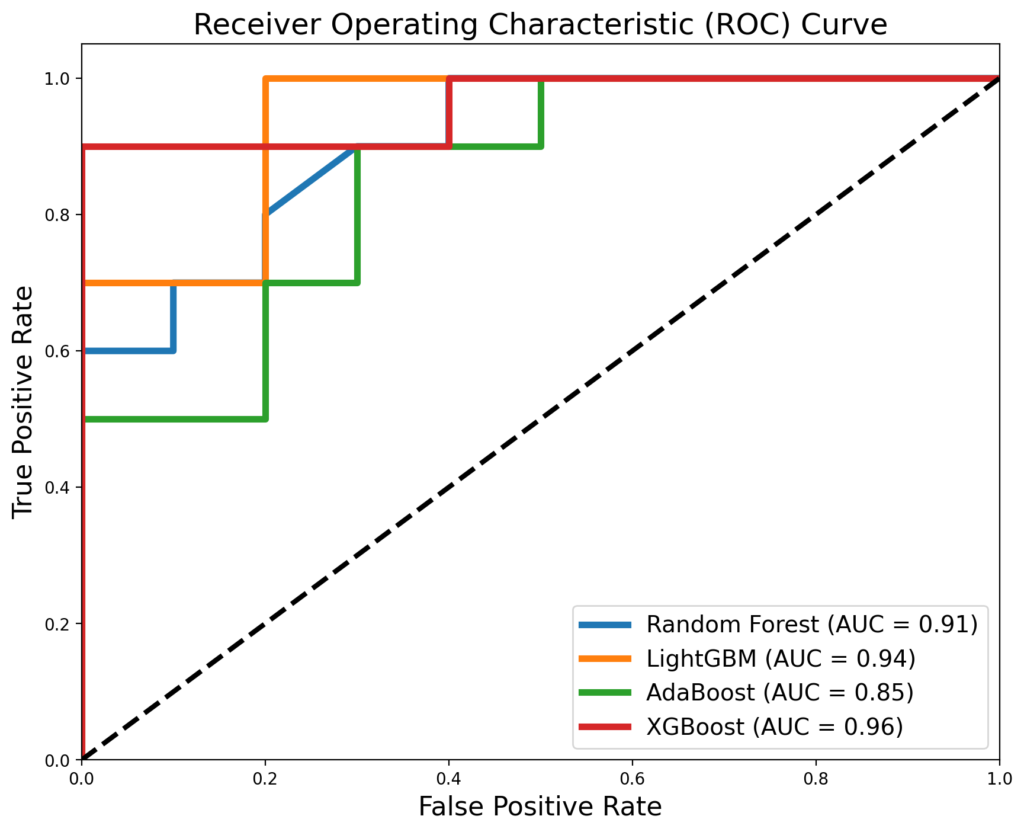Overview
This project focuses on using machine learning techniques to differentiate between healthy individuals and patients with Alzheimer’s disease using EEG (electroencephalogram) data. EEG signals are crucial for understanding brain activity, and analyzing them can provide insights into various neurological conditions.
Data Collection and Preprocessing
The dataset comprises EEG recordings from eight Alzheimer’s patients and ten healthy subjects, with five EEG channels recorded for each participant. These data undergo band-pass filtering to extract relevant frequency components (0.5–40 Hz) and remove noise.
Feature Extraction and Processing
Post-preprocessing, the EEG signals are segmented into ten-second windows. Various features such as mean, variance, skewness, kurtosis, power spectral density, and wavelet coefficients are extracted from each window and across multiple EEG channels. These features serve as key indicators to distinguish between the healthy control group and patients with Alzheimer’s.
Machine Learning Model Training and Evaluation
The extracted features are normalized to ensure consistency and efficiency in training. Several prominent machine learning classifiers are employed, including Random Forest, LightGBM, AdaBoost, and XGBoost. Hyperparameter tuning is performed using GridSearchCV to optimize model performance. Evaluation metrics such as accuracy, precision, recall (sensitivity), specificity, and AUC (Area Under the Curve) are computed to assess the models’ effectiveness in classification tasks. Results are visualized through ROC curves, providing a comparative analysis of each classifier’s performance.
Industry Applications
This project holds significant potential for applications in medical diagnostics, neurological research, and healthcare technology. It can aid in the early detection of epilepsy, monitoring of sleep disorders, and the development of brain-computer interfaces (BCIs).
Conclusion
This project demonstrates how advanced data processing and machine learning techniques can be applied to EEG data, offering valuable insights and practical applications in neurology and healthcare technology.



